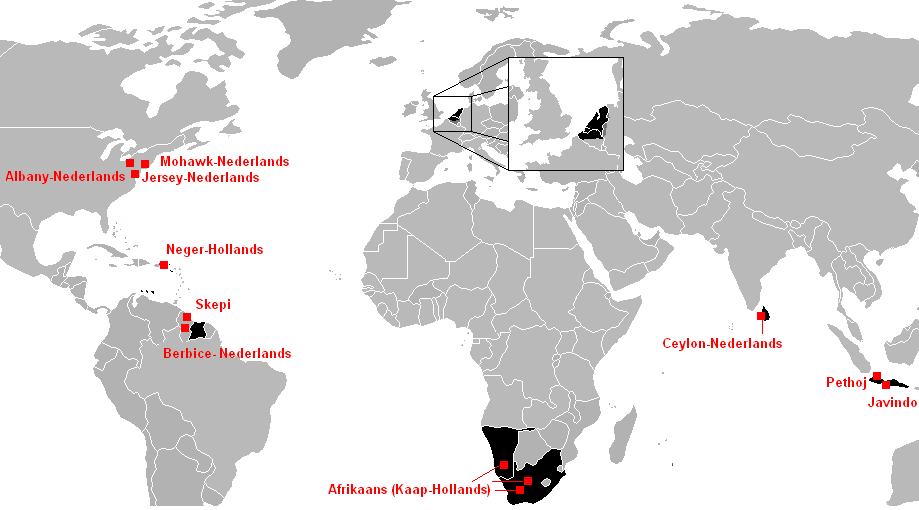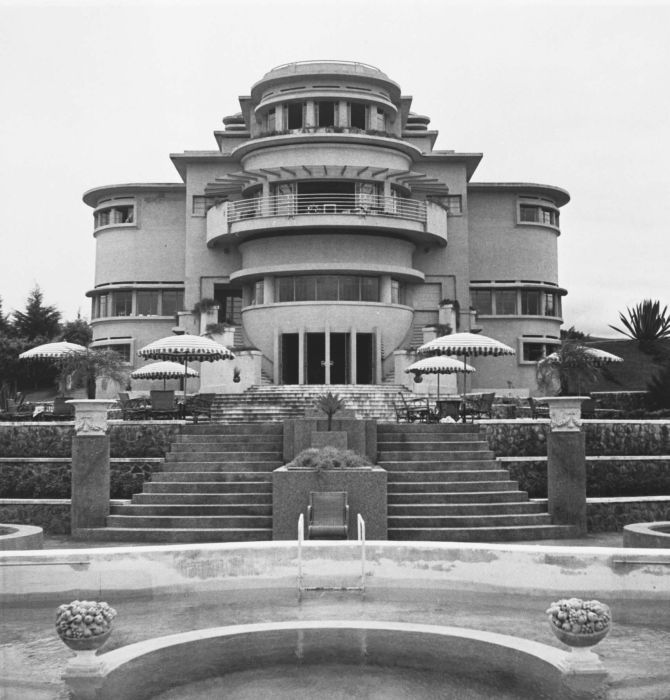|
Petjo Language
Petjo, also known as Petjoh, Petjok, Pecok, Petjoek () is a Dutch-based creole language that originated among the Indos, people of mixed Dutch and Indonesian ancestry in the former Dutch East Indies. The language has influences from Dutch and then depending on the region Javanese, Malay, Sundanese and Betawi. Its speakers presently live mostly in Indonesia and the Netherlands. The language is expected to become gradually extinct by the end of the 21st century, due to Indos' shift toward Indonesian in Indonesia and Dutch in the Netherlands. Background Just as the Indo (Eurasian) community historically originated from relationships between European males and Indonesian females, its language reflects this same origin. Typified as a mixed-marriage language, the grammar of Petjok is based on the maternal Malay language and the lexicon on the paternal Dutch language. The main contact mechanisms responsible for the creation of Petjok are lexical re-orientation; selective repli ... [...More Info...] [...Related Items...] OR: [Wikipedia] [Google] [Baidu] |
Indonesia
Indonesia, officially the Republic of Indonesia, is a country in Southeast Asia and Oceania, between the Indian Ocean, Indian and Pacific Ocean, Pacific oceans. Comprising over List of islands of Indonesia, 17,000 islands, including Sumatra, Java, Sulawesi, and parts of Borneo and New Guinea, Indonesia is the world's largest archipelagic state and the List of countries and dependencies by area, 14th-largest country by area, at . With over 280 million people, Indonesia is the world's List of countries and dependencies by population, fourth-most-populous country and the most populous Islam by country, Muslim-majority country. Java, the world's List of islands by population, most populous island, is home to more than half of the country's population. Indonesia operates as a Presidential system, presidential republic with an elected People's Consultative Assembly, legislature and consists of Provinces of Indonesia, 38 provinces, nine of which have Autonomous administrative divisi ... [...More Info...] [...Related Items...] OR: [Wikipedia] [Google] [Baidu] |
Morphemes
A morpheme is any of the smallest meaningful constituents within a linguistic expression and particularly within a word. Many words are themselves standalone morphemes, while other words contain multiple morphemes; in linguistic terminology, this is the distinction, respectively, between free and bound morphemes. The field of linguistic study dedicated to morphemes is called morphology. In English, inside a word with multiple morphemes, the main morpheme that gives the word its basic meaning is called a root (such as ''cat'' inside the word ''cats''), which can be bound or free. Meanwhile, additional bound morphemes, called affixes, may be added before or after the root, like the ''-s'' in ''cats'', which indicates plurality but is always bound to a root noun and is not regarded as a word on its own. However, in some languages, including English and Latin, even many roots cannot stand alone; i.e., they are bound morphemes. For instance, the Latin root ''reg-'' ('king') must alwa ... [...More Info...] [...Related Items...] OR: [Wikipedia] [Google] [Baidu] |
Dutch-based Pidgins And Creoles
A Dutch creole is a creole language whose main lexifier is the Dutch language, a West Germanic language of the Low Countries. These creoles usually developed from Dutch-based pidgins or through mixed language, language mixing where Dutch served as a major influence. Most Dutch-based creoles originated in Dutch colonies in the Americas and Southeast Asia, after the 17th century expansion of Dutch maritime trade network and naval power. Almost all of them are now extinct, while two known varieties are classified as "critically endangered" and nearing extinction. The extinction has generally been attributed to a wilful cultural and generational language shift towards standard Dutch or the majority language of the area with each successive generation. Afrikaans is considered to be a daughter language of Dutch and it, by contrast, is vibrant and has completely displaced Dutch in southern Africa, primarily South Africa and Namibia. Though not a majority-held position, it is considered b ... [...More Info...] [...Related Items...] OR: [Wikipedia] [Google] [Baidu] |
Nasalization
In phonetics, nasalization (or nasalisation in British English) is the production of a sound while the velum is lowered, so that some air escapes through the nose during the production of the sound by the mouth. An archetypal nasal sound is . In the International Phonetic Alphabet, nasalization is indicated by printing a tilde diacritic above the symbol for the sound to be nasalized: is the nasalized equivalent of , and is the nasalized equivalent of . A subscript diacritic , called an or , is sometimes seen, especially when the vowel bears tone marks that would interfere with the superscript tilde. For example, are more legible in most fonts than . Nasal vowels Many languages have nasal vowels to different degrees, but only a minority of world languages around the world have nasal vowels as contrasting phonemes. That is the case, among others, of French, Portuguese, Hindustani, Nepali, Breton, Gheg Albanian, Hmong, Hokkien, Yoruba, and Cherokee. Those nasal vo ... [...More Info...] [...Related Items...] OR: [Wikipedia] [Google] [Baidu] |
Leiden
Leiden ( ; ; in English language, English and Archaism, archaic Dutch language, Dutch also Leyden) is a List of cities in the Netherlands by province, city and List of municipalities of the Netherlands, municipality in the Provinces of the Netherlands, province of South Holland, Netherlands. The municipality of Leiden has a population of 127,046 (31 January 2023), but the city forms one densely connected agglomeration with its suburbs Oegstgeest, Leiderdorp, Voorschoten and Zoeterwoude with 215,602 inhabitants. The Statistics Netherlands, Netherlands Central Bureau of Statistics (CBS) further includes Katwijk in the agglomeration which makes the total population of the Leiden urban agglomeration 282,207 and in the larger Leiden urban area also Teylingen, Noordwijk, and Noordwijkerhout are included with in total 365,913 inhabitants. Leiden is located on the Oude Rijn (Utrecht and South Holland), Oude Rijn, at a distance of some from The Hague to its south and some from Amsterdam ... [...More Info...] [...Related Items...] OR: [Wikipedia] [Google] [Baidu] |
Indos In The Dutch East Indies
The Indo people (, ) or Indos are Eurasian people living in or connected with Indonesia. In its narrowest sense, the term refers to people in the former Dutch East Indies who held European legal status but were of mixed Dutch and indigenous Indonesian descent as well as their descendants today. In the broadest sense, an Indo is anyone of mixed European and Indonesian descent. Indos are associated with colonial culture of the former Dutch East Indies, a Dutch colony in Southeast Asia and a predecessor to modern Indonesia after its proclamation of independence shortly after World War II. The term was used to describe people acknowledged to be of mixed Dutch and Indonesian descent, or it was a term used in the Dutch East Indies to apply to Europeans who had partial Asian ancestry. "Indos–people of Dutch descent who stayed in the new republic Indonesia after it gained independence, or who emigrated to Indonesia after 1949–are called 'Dutch-Indonesians'. Although the majori ... [...More Info...] [...Related Items...] OR: [Wikipedia] [Google] [Baidu] |
Javindo Language
Javindo, also known by the pejorative name Krontjong, is a Dutch-based creole language spoken on Java, Indonesia, such as Semarang. The name Javindo is a portmanteau of ''Java'' and '' Indo'', the Dutch word for a person of mixed Indonesian and Dutch descent. This contact language developed from communication between Javanese-speaking mothers and Dutch-speaking fathers in Indo families. Its main speakers were Indo-Eurasian people. Its grammar was based on Javanese, and its vocabulary was based on the Dutch lexicon but pronounced in a Javanese manner. It shows simplification of morphological verb system from Javanese grammar such as merging verb class, disappearance of verbal subcategories. It should not be confused with Petjo, a different Dutch- and Malay-based creole also spoken by Indo-Eurasians. With the loss of the generation that lived in the Dutch East Indies era, that language has almost died out, but it become identity for '' Indo'' descent. In contrast, the colonia ... [...More Info...] [...Related Items...] OR: [Wikipedia] [Google] [Baidu] |
Surabaya
Surabaya is the capital city of East Java Provinces of Indonesia, province and the List of Indonesian cities by population, second-largest city in Indonesia, after Jakarta. Located on the northeastern corner of Java island, on the Madura Strait, it is one of the earliest port cities in Southeast Asia. According to the Government of Indonesia, National Development Planning Agency, Surabaya is one of the Regions of Indonesia#Development regions, four main central cities of Indonesia, alongside Jakarta, Medan, and Makassar. The city had a population of 2,874,314 within its city limits at the 2020 census.Badan Pusat Statistik, Jakarta, 2021. With 3,009,286 people living in the city as of mid 2023 (comprising 1,490,358 males and 1,518,928 females) Badan Pusat Statistik, Jakarta, 28 February 2024, ''Kota Surabaya Dalam Angka 2024'' (Katalog-BPS 1102001.3578) and over 10 million in the extended Surabaya metropolitan area, according to the latest official estimate, Surabaya is the ... [...More Info...] [...Related Items...] OR: [Wikipedia] [Google] [Baidu] |
Semarang
Semarang (Javanese script, Javanese: , ''Kutha Semarang'') is the capital and largest city of Central Java province in Indonesia. It was a major port during the Netherlands, Dutch Dutch East Indies, colonial era, and is still an important regional center and port today. The city has been named as the cleanest tourist destination in Southeast Asia by the ASEAN Clean Tourist City Standard (ACTCS) for 2020–2022. It has an area of and had a population of 1,555,984 at the 2010 censusBiro Pusat Statistik, Jakarta, 2011. and 1,653,524 at the 2020 census,Badan Pusat Statistik, Jakarta, 2021. making it Indonesia's ninth most populous city after Jakarta, Surabaya, Bekasi, Bandung, Medan, Depok, Tangerang and Palembang; the official population estimate as at mid-2023 was 1,694,740, comprising 838,440 males and 856,310 females.Badan Pusat Statistik, Jakarta, 28 February 2024, ''Kota Semarang Dalam Angka 2024'' (Katalog-BPS 1102001.3374) The built-up urban area had 3,183,516 inhabitants a ... [...More Info...] [...Related Items...] OR: [Wikipedia] [Google] [Baidu] |
Bandung
Bandung is the capital city of the West Java province of Indonesia. Located on the island of Java, the city is the List of Indonesian cities by population, fourth-most populous city and fourth largest city in Indonesia after Jakarta, Surabaya, and Medan. Greater Bandung (Bandung Basin Metropolitan Area / BBMA) is the country's second-largest and second most populous List of metropolitan areas in Indonesia, metropolitan area, with over 11 million inhabitants. Situated above sea level (the highest point in the North area is at an altitude of , and the lowest in the South at above sea level), approximately southeast of Jakarta, Bandung has cooler year-round temperatures than most other List of cities in Indonesia, Indonesian cities. The city lies in a river basin surrounded by volcanic mountains that provide a natural defense system, which was the primary reason for the Dutch East Indies government's plan to move the capital from Batavia (modern-day Jakarta) to Bandung. The D ... [...More Info...] [...Related Items...] OR: [Wikipedia] [Google] [Baidu] |
Batavia, Dutch East Indies
Batavia was the capital of the Dutch East Indies. The area corresponds to present-day Jakarta, Indonesia. Batavia can refer to the city proper or its suburbs and hinterland, the , which included the much larger area of the Residency of Batavia in the present-day Indonesian provinces of Jakarta, Banten and West Java. The founding of Batavia by the Dutch in 1619, on the site of the ruins of History of Jakarta, Jayakarta, led to the establishment of a Dutch colony; Batavia became the center of the Dutch East India Company's trading network in Asia. Monopolies on local produce were augmented by non-indigenous cash crops. To safeguard their commercial interests, the company and the colonial administration absorbed surrounding territory. Batavia is on the north coast of Java, in a sheltered bay, on a land of marshland and hills crisscrossed with canals. The city had two centers: Kota Tua Jakarta, Oud Batavia (the oldest part of the city) and Sawah Besar, Weltevreden (the relatively n ... [...More Info...] [...Related Items...] OR: [Wikipedia] [Google] [Baidu] |






